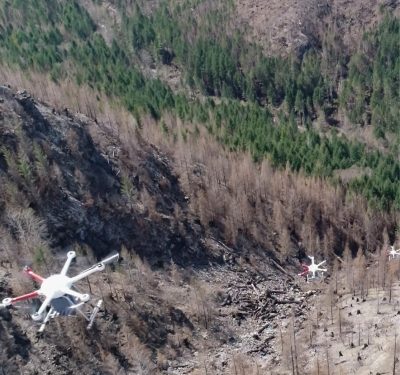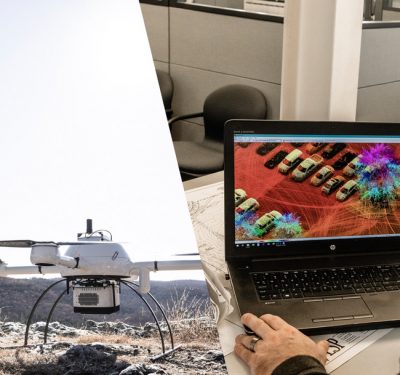
Heidi K. Gardner is a distinguished fellow at the Harvard Law School and co-founder of the Gardner & Co research/advisory firm. She researches, teaches, speaks and consults on topics related to why collaboration is becoming truly essential in today’s complex world. Her book “Smart Collaboration: How Professionals and Their Firms Succeed by Breaking Down Silos” is a Washington Post best-seller.
IUS: You say smart collaboration differs from simple sequential teamwork or cross-selling. What do you mean?
GARDNER: What I call smart collaboration is that activity of bringing together people with diverse expertise or perspectives, and then harnessing them so the group collectively can do more than any single individual. When they truly integrate different knowledge and ways of seeing the world, they can tackle more “VUCA”—volatile, uncertain, complex, ambiguous—problems. Those big, hairy, thorny problems require people who may be really narrow, deep experts to work with people who have complementary points of view to develop this more holistic perspective. Otherwise, there’s a risk that they will end up with the engineering but not the customer service answer. Or vice versa.
IUS: What are benefits of smart collaboration?
GARDNER: Our research consistently shows that organizations engaging in this kind of collaboration generate higher revenues and profits, end up with more satisfied and loyal customers, and attract, retain and engage higher caliber talent. You can help them tackle the problems that are most important, and that results in loyal clients, because, frankly, it’s still a relatively rare set of competencies. When clients find that kind of integrated service, they’re far less likely to move even when one of those key people departs.
If you’re really doing this kind of smart collaboration and tackling the customer’s most important, or most vexing, problems, it probably means that you’re—forgive the phrase—becoming higher and higher in the food chain. And the C suite, the board, by nice coincidence, have the most decision-making latitude, the biggest budgets. It opens the door for you to bring in more sophisticated perspectives. With that lens into the organization—the problems, challenges, opportunities—you can actually do more sophisticated things with them.
IUS: How does smart collaboration support innovation?
GARDNER: Especially when people come together across different disciplines or ways of thinking, innovation is much more likely to happen. A lot of people confuse innovation with creativity. Innovation is creativity that gets applied for a useful purpose. You really need people on the team who are thinking the big crazy out of the box ways—“complex thinkers”—teamed with “concrete thinkers,” people who are very pragmatic and action-oriented, and thrive on taking those crazy ideas and doing something powerful and useful with them.
MAKING SMART COLLABORATION WORK
IUS: What are the critical elements for a smart collaboration?
GARDNER: Making sure collaboration is just a means to a really clear set of ends is really crucial, and so is being really clear on why you’re collaborating. What is it that you’re trying to accomplish? What’s your hypothesis about this specific group of experts that might allow them to collectively deliver more value than the sum of the parts? Leveraging them so they don’t lose their unique value and they add something different. If you don’t bring in the cyber expert early enough, you may end up reengineering processes that are putting you at risk.
IUS: What are some of the obstacles?
GARDNER: Smart collaboration is hard because it hinges on diversity of viewpoints and expertise. But that takes us out of our comfort zone. We have to compromise in terms of believing that our discipline is superior. And that’s hard for a lot of people.
A solution that is far more customized takes some hard work, and early on the costs and the risk are high. But over time, those systems and benefits start to flow in. So those lines do cross. But people need to get through that pain period, where there’s a negative ROI.
IUS: Does that require trust?
GARDNER: Our research has identified two different types of trust. One is “competence trust.” If I’m going to collaborate with you, I have to believe you are producing high-quality outputs, on time on budget. I have to believe the customer is going to be better off with you on the team.
There’s also “interpersonal trust.” Inasmuch as I might respect your expertise, if I think you’re a jerk, will take undue credit or steal my ideas, even if you’re the only person who can help me, if I really don’t trust you interpersonally, I’ll basically keep you in a box while we’re solving this problem.
IUS: What about companies of different sizes?
GARDNER: Establishing interpersonal trust in a large organization requires systems and processes, and above all leadership and culture to make sure that gets embedded. But I’ve been shocked to work in organizations that have 12 principals or 16 partners and they don’t understand why they should work together. People need a curiosity about one another, and how they add value, and they have to be curious about the problems they’re trying to resolve.
Ideally, if you can cultivate the kind of organization where people are intellectually curious, are open to experimentation and hypothesis testing, people can learn and grow and develop in both spontaneous and serendipitous and also programmatic ways. I think that’s a really healthy kind of culture. It also means that failure can be embraced.
IUS: What about a tiny company?
GARDNER: For them, it’s fundamentally about what allows them to give the best possible customer service. If they’re uncoordinated, the customer experience is just going to be pretty crummy.
ACROSS AND BEYOND THE ORGANIZATION
IUS: What are other hallmarks across departments?
GARDNER: People in the asset group need to realize that sometimes executives are willing to take a calculated risk on security, or legal and compliance or whatever, to capture exponential upside. If your function is all about mitigating risk, you think the only thing that matters is being as secure as possible.
IUS: Are there other cohorts to consider within the company?
GARDNER: We were looking at an information security department. There, sometimes the collaboration is across levels of hierarchy, or even across generations. And millennials are going to see potentially some issues related to cybersecurity that might not be front of mind for people who aren’t using technology in the same ways. Being able to listen to people who have different life experiences can be incredibly powerful, because it generates not only innovation, but empathy.
IUS: Within the supply chain, what’s important when you’re in the middle, say an integrator, or as the end user working back into it?
GARDNER: I worked with an automotive company in Europe. The way they were looking at electric vehicles was going to have a significant impact on dealer profitability, because a lot of dealer margin is made from after-sales service. So they were bringing dealers in much earlier in their R&D process to think about what those effects would be and how to deal with it.
Likewise, they were bringing in customers. They had a trucks division, and their customer base was moving significantly from individual buyers to fleets with very different priorities.
Over time, the effect of autonomous driving is going to completely change how that landscape looks. Integrating those voices into the R&D process is really important to them. A number of business service providers used to serve cars, and now they’re combining them into mobility practices.
GENIUSES AND LEADERS
IUS: What is the role of rainmakers and even geniuses?
GARDNER: Oftentimes, those people are really “precious” about what they’re trying to accomplish. If what they’re really trying to do is work on the highest-value problem, they really want to be at that cutting edge.
Help them understand collaboration is not watering down their area of expertise. They will get excited about the collaboration when it doesn’t take the spotlight away and they can 100% play with their strengths. All they have to think about is the engineering problem as an engineering problem. The relationship manager smooths out the politics.
IUS: Finally, what about leaders?
GARDNER: The stories that a leader tells are the most powerful stories in shaping culture. Leaders need to be really cognizant of whom they’re holding up as a hero, the kinds of stories they tell and what the reward system signals. It’s really important to hold that spotlight on different kinds of people and acknowledging people for the role they played.
Leaders need to be true role models, and demonstrate a level of inclusiveness. If they call a meeting and speak first, they’re almost certainly shutting down some voices.
The behaviors that really are inclusive, you get people on teams not based on old boys networks, or what somebody looks like, but on what they can contribute. That gives them exposure to these big problems they might not get otherwise. They can stretch their wings, develop new skills, get face time with the customer and more senior people, get real-time coaching from some of the gurus already on that team.
That really is what it takes to create an environment where everyone thrives. It isn’t that caste system where some people are more equal than others. If they’re valuable enough to have in your company, they’re valuable enough to invest in their exposure and development.






